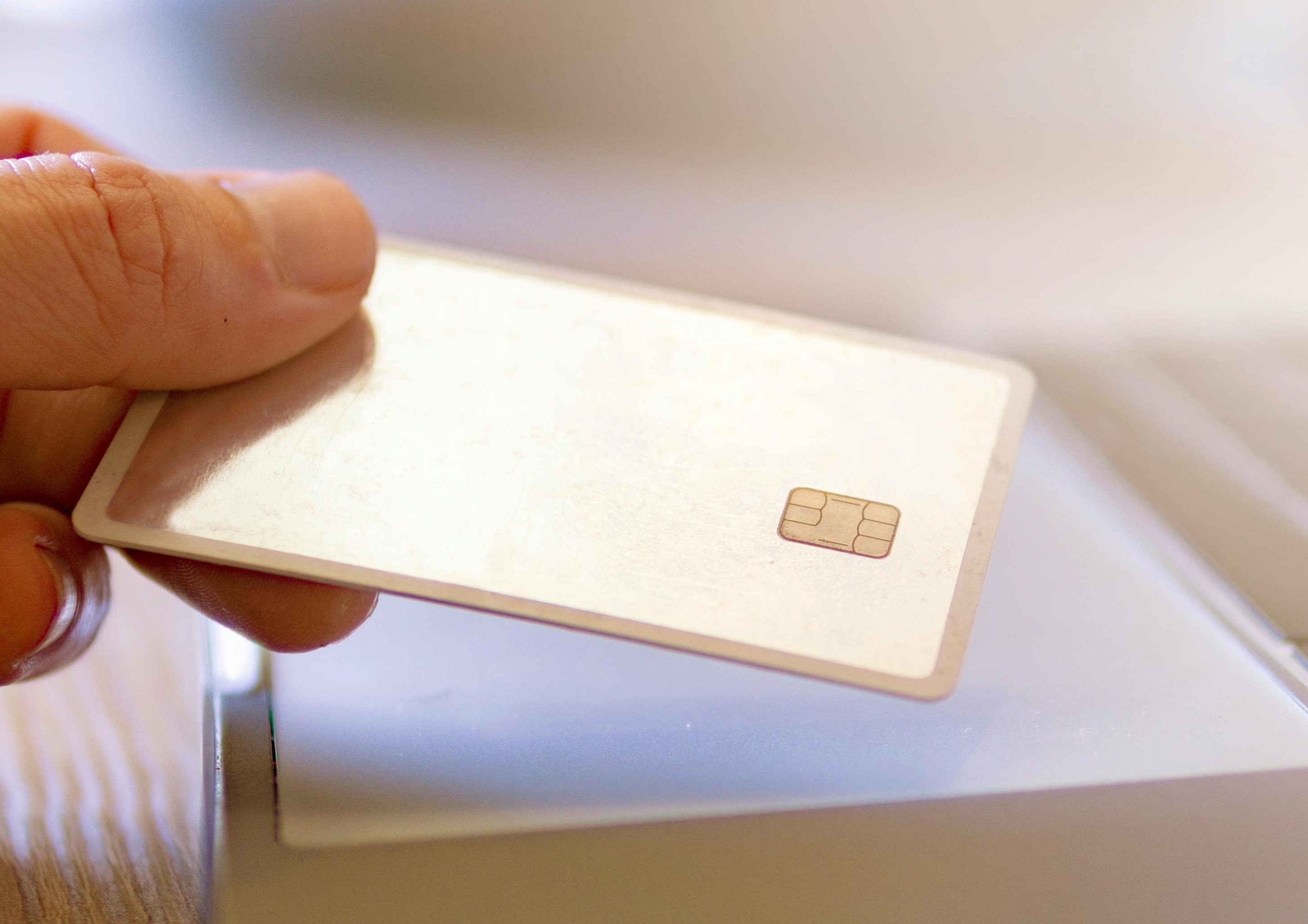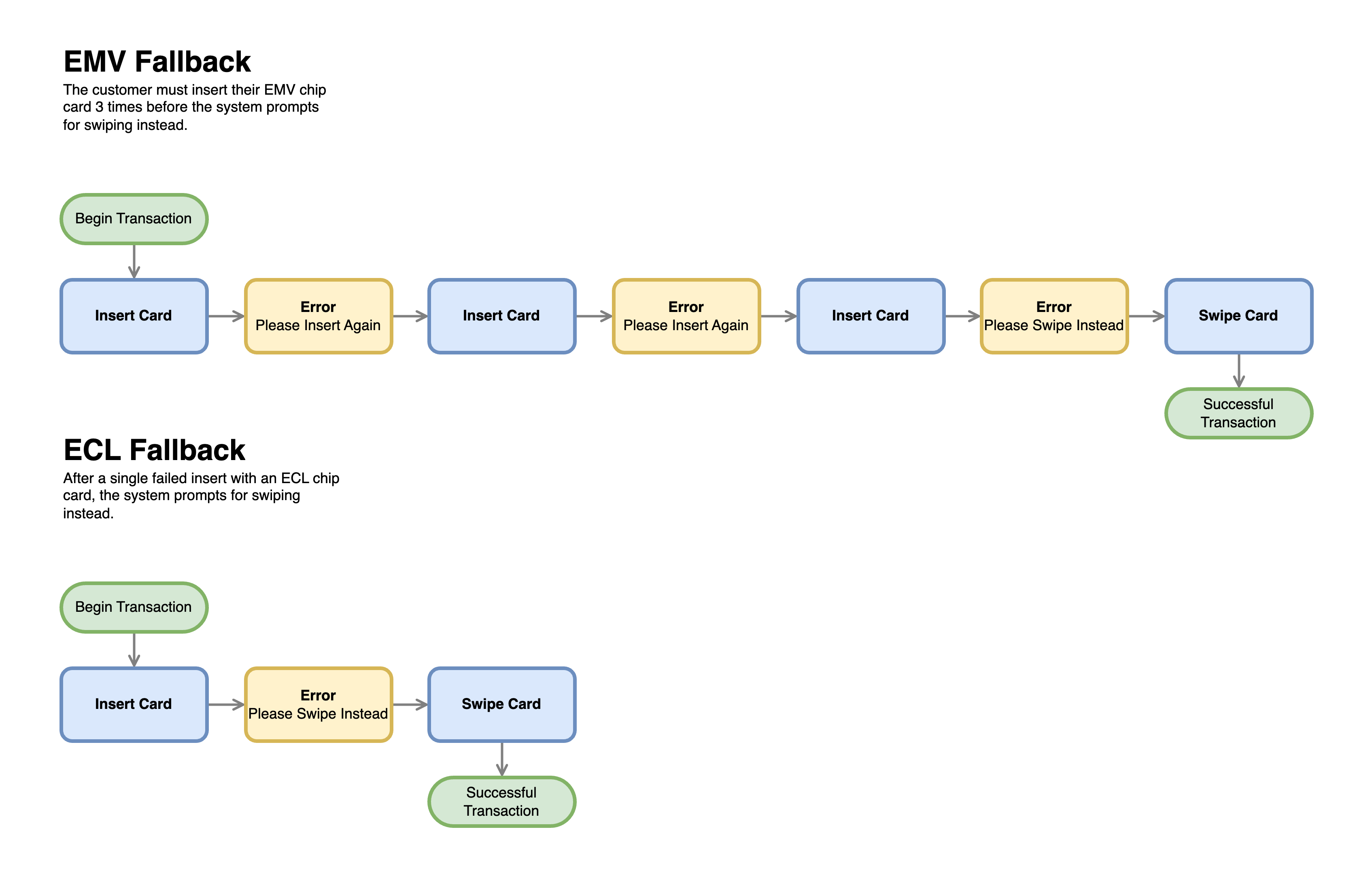Navigating the EBT Chip Card Transition with Forage
What POS platforms need to know about the EBT chip card transition to stay ready

Preparing for the EBT chip transition
EBT payments are undergoing a significant change, and chip-enabled cards are at the forefront of this transition. As states begin implementing this new standard, POS platforms like yours must be prepared to support the shift. This guide will explain the importance of the EBT chip transition, why it’s happening, and how you can ensure your systems are ready for a seamless transition.
Why is the transition to chip cards so important?
Fraud and benefit theft have become significant challenges with magnetic stripe cards. By adopting chip technology, EBT programs are taking a big step toward enhanced security, protecting retailers and cardholders.
Forage is here to guide you through these changes and ensure your platform is ready for the next phase. We understand your challenges and are committed to providing the support you need.
The impact on POS
The operation of EBT cards is significantly changing. Traditionally, EBT cards used magnetic stripes; however, states are now adopting EMV chip technology, the same secure standard employed by credit and debit cards. Depending on the state, these updated EBT cards will be either dual-interface (supporting insert and tap transactions) or contact-only (insert transactions only). This transition enhances security and aligns EBT systems with contemporary payment methods and technologies.
What is EMV chip technology?
EMV chip technology is the global standard for secure card payments. Named after its creators (Europay, Mastercard, and Visa), EMV uses a small, embedded chip in payment cards to store and protect sensitive data. Unlike magnetic stripes, which are static and easy to duplicate, EMV chips generate a unique transaction code for each purchase, making it much harder for fraudsters to clone or misuse the card.

An EMV chip embedded in a credit card.
What does this mean for POS systems?
To ensure smooth transactions, your system must support 220 service codes for chip-enabled cards and 120 service codes for legacy magnetic stripe cards. Additionally, fallback mechanisms are essential—if a chip transaction fails, the system must direct the user to swipe the card instead, preventing any interruptions at checkout. These updates will help maintain a seamless customer experience during this critical transition.
Forage’s role in the transition
At Forage, we're EBT specialists. As your trusted partner, we're here to provide the expertise and resources you need to confidently transition to chip-enabled EBT cards. Whether it's understanding the technical requirements or preparing your systems, we're with you every step of the way.
Forage's plan for the transition
Our transition plan is designed to ensure a smooth adjustment for POS platforms. We'll be rolling out support in two key phases:
- Phase 1: ECL Fallback (January 2025). The first step is to ensure transactions continue even if POS systems aren’t fully chip-ready. This mechanism allows a chip-enabled card to “fallback” to magnetic stripe processing after a failed chip attempt, minimizing customer disruption.
- Phase 2: Full AID Readiness (2025). In the second phase, POS systems must fully support chip transactions, including the ability to recognize the new EBT Application Identifier (AID). This milestone will complete the chip card transition and unlock the benefits of enhanced security and fraud protection.
With Forage as your partner, you will receive guidance and support to navigate each phase and ensure your platform is ready for what’s next.
Preparing your POS systems for ECL Fallback
The transition to chip-enabled EBT cards introduces ECL Fallback, a crucial mechanism to maintain smooth transactions during the rollout. When a terminal isn’t fully ready to process chip transactions, ECL Fallback allows the transaction to “fall back” to magnetic stripe processing after a single failed chip attempt. Unlike standard EMV Fallback, which typically requires multiple failed attempts, ECL Fallback simplifies the process, enhancing the customer experience and reducing frustration at checkout.

Flowchart illustrating the differences between EMV Fallback and ECL Fallback
What’s required for ECL Fallback?
To support ECL Fallback, your terminals must implement these key updates:
Recognize the New AID
- When a customer taps or inserts their EBT chip card, the terminal reads the Application Identifier (AID:
A0000000044542). - For ECL Fallback, the terminal recognizes the AID but prompts the user to swipe their card since it cannot process the chip transaction.
Understand the New 220 Service Code
- If a customer swipes their EBT chip card, the terminal identifies the 220 service code in the magnetic stripe and assumes the customer intended to tap or insert.
- The terminal displays a gentle reminder, such as: “You have a chip card; please tap or insert.”
Break the Swipe-Tap Loop
- To avoid endless retries, the terminal must terminate the process after one failed tap or insert attempt. The system then accepts the swipe as the valid option, ensuring a seamless transaction.
Preparing your systems
Getting your platform ready for the EBT chip card transition doesn’t have to be complicated. Focus on these steps:
Upgrade Terminal Capabilities
- Ensure terminals can identify the EBT AID:
A0000000044542. - Configure fallback mechanisms to process magnetic stripe transactions when chip processing isn’t supported.
Test Your Systems
- Request Test Cards: Contact Forage to obtain EBT chip test cards. These simulate real-world transactions and help validate ECL Fallback readiness.
- Follow FNS Guidelines: Use the USDA Food and Nutrition Service (FNS) test scenarios to ensure your terminals can handle all transaction types—chip-enabled and magnetic stripe.
Enhance User Experience (UX)
- Update Prompts and Error Messages: Clear messaging can make all the difference. When a chip transaction fails, guide users with intuitive messages like:
- “Card Not Supported. Please Swipe Your Card.”
- “You have a chip card; please tap or insert.”
- These updates reduce confusion, helping customers navigate fallback scenarios with ease.
By implementing these technical and user-facing updates, your platform will ensure seamless transactions during the transition to chip-enabled EBT cards, setting the stage for long-term readiness and success.
Looking ahead to Full AID Readiness
The transition doesn’t end with ECL Fallback—Full AID Readiness is the ultimate goal. This next phase signifies the complete adoption of chip-enabled EBT cards, enhancing security and aligning with modern payment methods.
What Full AID Readiness entails
- Full Support for Chip Transactions: Terminals must fully recognize and process transactions using the EBT Application Identifier (AID). There will be no fallback to magnetic stripes; chip transactions will be the default.
- Enhanced Security and Fraud Prevention: By eliminating the dependence on magnetic stripes, Full AID Readiness safeguards against counterfeit cards and fraud, ensuring safer transactions for merchants and customers.
We understand that adapting to these changes requires time and resources, which is why Forage will be there every step of the way:
- Ongoing Platform Support: From technical updates to implementation guidance, we’ll work closely with you to ensure your terminals meet Full AID Readiness requirements.
- Testing and Readiness Assistance: As this phase approaches, Forage will provide resources, tools, and expert support to help you validate your system’s performance and readiness.
The move to Full AID Readiness is a critical step forward for EBT programs. With Forage as your partner, you can confidently embrace the future of secure, chip-based transactions.
Further Reading & Resources
Check out these links for additional information.
- For details on accepting SNAP EBT chip cards, see this PDF guide from FNS.
- This FNS page covers SNAP EBT modernization, including chip card security updates.
- For info on California’s EBT chip card rollout, see this retailer update from FNS.
Need help? Contact Forage
If you have questions or need support as you prepare for the EBT chip card transition, Forage is here to help. As your trusted partner, we’re ready to guide you through updates, testing, and everything to ensure your platform is prepared for what’s next.
Email us at [email protected] for any of the following:
- Obtaining a test EBT chip card: Ensure your system handles ECL fallback correctly by testing with a card. Reach out to us for assistance obtaining one.
- Support, questions, or feedback. We'd love to hear from you!
Together, we’ll make the EBT chip card transition seamless and successful!
Glossary
Here are some of the industry terms used in this article.
- AID: Application Identifier. A unique code identifying the EBT payment application.
- EBT: Electronic Beneifts Transfer. EBT is an electronic system that delivers government benefits, such as SNAP, directly to a recipient’s card. Customers can use EBT cards, similar to debit cards, to purchase eligible items at participating retailers.
- ECL Fallback: A process enabling "fallback" to magnetic stripe transactions when the POS cannot process the chip.
- EMV chip technology: A global standard for secure card payments that uses an embedded chip to generate unique transaction codes, reducing fraud and cloning risks compared to magnetic stripes.
- EMV Fallback: A process that allows a payment to proceed using a card’s magnetic stripe if the chip transaction fails. Unlike ECL Fallback, EMV fallback requires three failed chip attempts before prompting customers to swipe their cards.
- POS: Point of Sale. Your POS system combines hardware and software to process customer checkout transactions. These include the card reader, screen, and other equipment that helps you accept payments.
- SEMTAC: The SNAP EBT Modernization Technical Assistance Center. It is a resource hub that assists retailers in updating their systems to support SNAP EBT modernization efforts, including the transition to chip cards and ECL fallback. The hub provides guidance, test scripts, and a platform for reporting system readiness.
- SNAP: Supplemental Nutrition Assistance Program. A federal program that provides nutritional assistance to eligible individuals and families. Customers use SNAP benefits through EBT cards to purchase food at authorized retailers.
Images used in this document:
- Cover photo by Towfiqu Barbhuiya on Pexels.
- Close-up of EMV chip card photo by Joshua Woroniecki on Pexels.
Updated about 1 month ago
